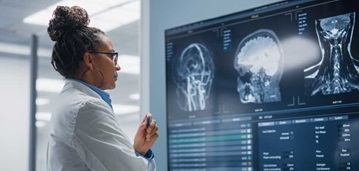Mobile Technology: Changing the Way Care is Administered

This is part two of a three-part series on how mobility can enable better patient care. You can read part one or download the complete series as a PDF.
From anywhere/anytime access to care and closer, more customized provider/patient relationships, to better time management, there are many examples of ways in which mobile technology has changed how healthcare is administered.
Consider the tablet and mobile phone. These ubiquitous devices are helping clinicians in a variety of ways:
- Fast access to EHRs and patient information – even from remote locations
- Quick documentation of patient encounters
- Real-time bed management (environmental services, nutrition, transport)
- Call scheduling
- Anywhere, anytime training and education
- Physician-to-patient communications for appointment reminders or test results
Remote monitoring and video conferencing technologies are also enabling physicians to meet patients where they are, breaking down the barriers of time and distance to allow for:
- Improved access to specialists
- Remote diagnostics and tracking of critical and complex patients (in ICU and at home)
- E-Visits to patients in rural or remote areas
- Retail-based healthcare kiosks for tests and other health assessments
- Clinician-to-clinician consultations
- Language interpretation
Patient-centered apps and devices allow individuals to better manage their own care and provide added information to clinicians, often automatically. These include wearable medical devices like blood pressure cuffs, blood sugar monitors, and body fitness trackers. And patient portals – accessible from desktop PCs as well as phones and other mobile devices – let patients communicate with doctors and caretakers, schedule appointments, check in remotely/early, manage medications, review lab results and more.
Next: Healthcare Data Mobility has Promise, but what are the Challenges?
From anywhere/anytime access to care and closer, more customized provider/patient relationships, to better time management, there are many examples of ways in which mobile technology has changed how healthcare is administered.
Locked Content
Click on the button below to get access
Unlock NowOr sign in to access all content on Comcast Business Community
Learn how Comcast Business can help
keep you ready for what's next.




.tmb-.jpg?Culture=en&sfvrsn=f2348d8a_1)





.jpg?sfvrsn=f2348d8a_1&MaxWidth=366&MaxHeight=171&ScaleUp=false&Quality=High&Method=ResizeFitToAreaArguments&Signature=7C6615772A265EF34BE078DB03055332D9C13FB2)
